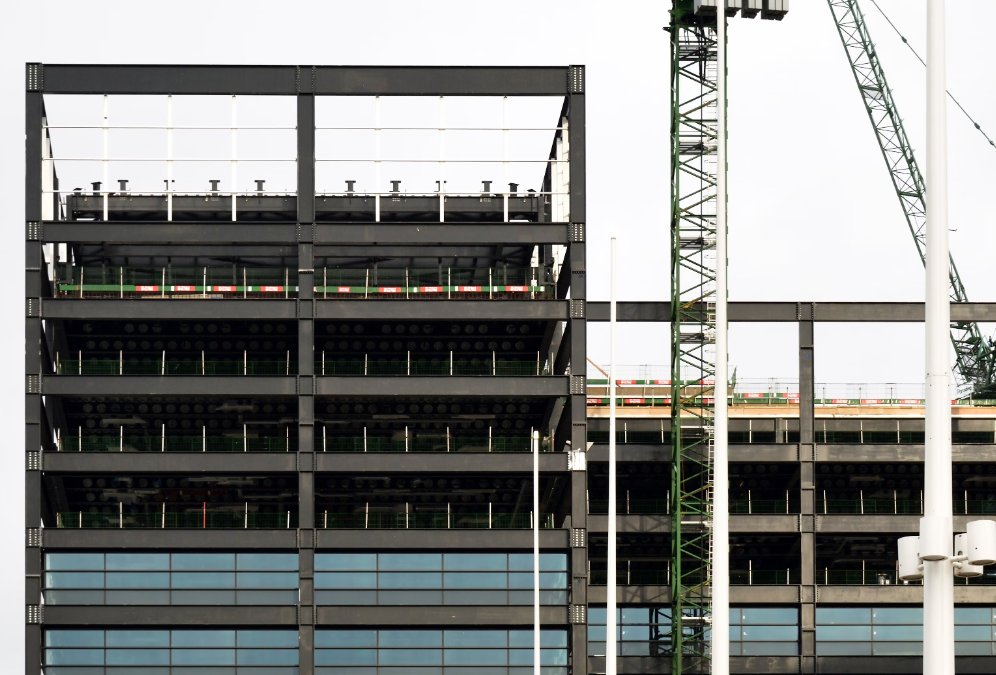The Fundamentals of Structural Steel Installation
Structural steel installation is a critical process in modern construction, playing a fundamental role in shaping the infrastructure of our cities. This process involves the assembly of steel components to form a framework that supports buildings, bridges, and other structures. The significance of structural steel lies in its strength, durability, and flexibility, making it an ideal choice for urban development.
In Australia, the importance of structural steel installation cannot be overstated. According to the Australian Steel Institute, over 50% of all steel produced in the country is used in construction. It’s a statistic that underscores our reliance on steel to build the commercial buildings, and residential complexes that define our urban landscapes, as a material that satisfies both the structural integrity as well as future-proofed needs of building use in its foreseeable future. The demand for effective structural steel installation methods can only look to increase, as urbanisation expands and evolves – Weldform Structures explores more on the topic, and its fundamental place in development.
Steel Detailing – Planning and Design
For starters, the structural steel installation process begins with planning and design. Engineers and architects collaborate, creating detailed drafts that outline the dimensions and specifications of each steel component. These blueprints are essential for ensuring that the steel framework is both safe and stable, conducting structural analysis to simulate and evaluate the loads and stresses that the structure will encounter.
Analysis will normally involve the proposed structure’s response to loads and stresses, such as wind and seismic activity, alongside structural gaps – like fractures – that could lead to failure. By simulating these conditions, engineers can predict potential weak points and optimise their designs for maximum stability and safety.
Precision in Fabrication
Following the design phase, the next step is the fabrication of steel components. Fabrication involves cutting, bending, and assembling steel sections in a controlled environment, typically a fabrication shop. Advanced technologies, such as Computer Numerical Control (CNC) machines, are employed to achieve high precision in cutting and shaping steel parts. CNC machines use computer-aided design (CAD) files to guide their movements, ensuring each cut is accurate to within millimetres.
A notable example of precision fabrication can be seen in the construction of the Barangaroo South project in Sydney. The use of state-of-the-art fabrication techniques enabled the production of complex steel components, which were critical in achieving the unique architectural design of buildings like the Sydney Hotel Resort. This level of precision not only ensures that the structural integrity of the framework stays true to parameters specifically designed for project safety, but also reduces the margin for error during installation.
Erection and Assembly of Increasingly Complex Structures
Once the steel components are fabricated, they are transported to the construction site for assembly. The erection process involves lifting and positioning the steel pieces using cranes, mounted trucks, miscellaneous rigging equipment, not to mention transport of materials that begin to move beyond individual capability. Ironworkers then connect these components using bolts, welds, and other fastening methods, with each connection meticulously inspected to meet stringent safety standards.
The construction of the Queen’s Wharf Brisbane development stars as a poster-child for the complexity and scale that structural steel has taken development projects. This project required the installation of over 220 tonnes of structural steel, highlighting the extensive planning and coordination needed to successfully erect such a massive structure. The use of structural steel allowed for rapid assembly, significantly reducing construction time and costs.
The Benefits of Structural Steel in Urban Development
It goes without saying, and for more than just the reasons above – structural steel offers numerous advantages in urban development. In the same way that structural analyses are taken to reduce gaps in integrity, one of its primary benefits lies in its high strength-to-weight ratio, which allows for the construction of taller and more resilient buildings. This property is particularly important in densely populated urban areas, where space is at a premium.
Additionally, steel’s recyclability contributes to sustainable building practices. According to the World Steel Association, steel is 100% recyclable, and its reuse in construction reduces the environmental impact significantly. The New Royal Adelaide Hospital is a prime example of this, incorporating recycled steel in its construction and earning high sustainability ratings from the Australian Green Building Council.
Technological Innovations in Structural Steel Installation
Technological advancements have further revolutionised structural steel installation. Building Information Modeling (BIM) is a cutting-edge technology that simulates detailed 3D models of steel structures within a digital environment. These models provide comprehensive information about the dimensions, properties, and connections of steel components, condensing the transition from design to fabrication in a highly transferable way.
The Sydney Metro project is a noteworthy case where BIM was extensively used to streamline the construction process – forecasting potential pitfalls and risks in design well before final installation. By integrating BIM, the project achieved greater efficiency and accuracy, resulting in significant cost savings and reduced construction time.
The Future of Structural Steel in Urban Development
As urbanisation accelerates, the role of structural steel in shaping our cities will become increasingly vital. Researchers are continually exploring new materials and methods to enhance the performance and longevity of steel structures – from detailed planning and precise fabrication to their rapid assembly and installation, structural steel has equipped our needs for modern urbanisation to fit anything from integrity and design to sustainability.
Convinced on your need for structural steel? Contact us today, for a consultation on how our services can suit your project needs.

